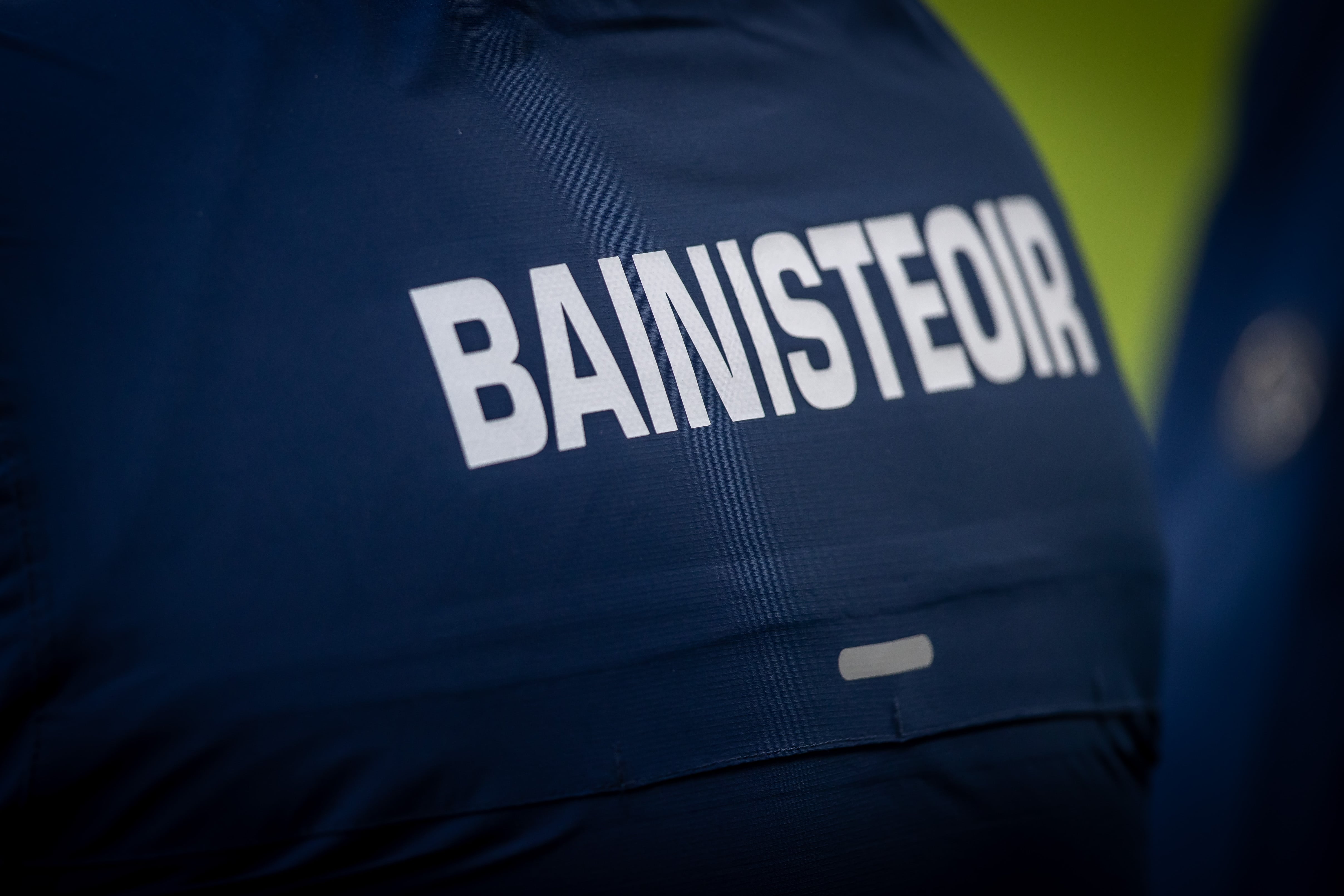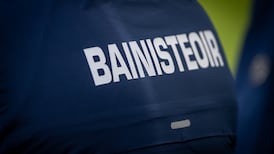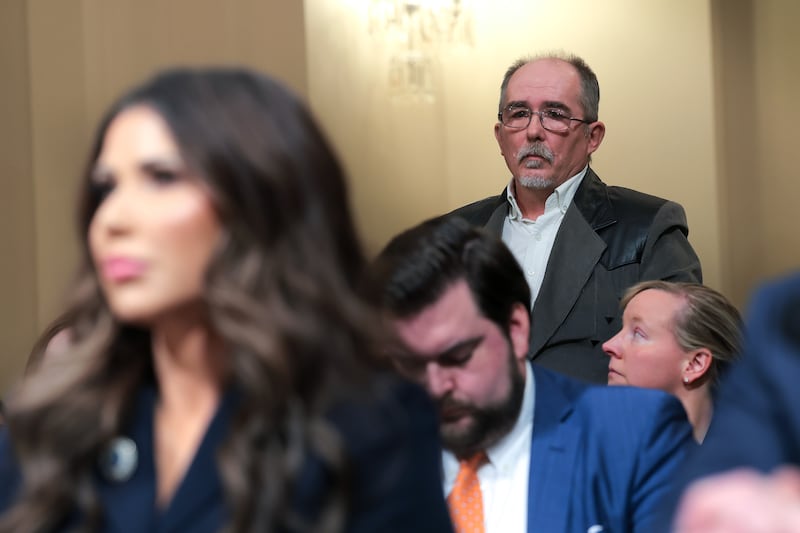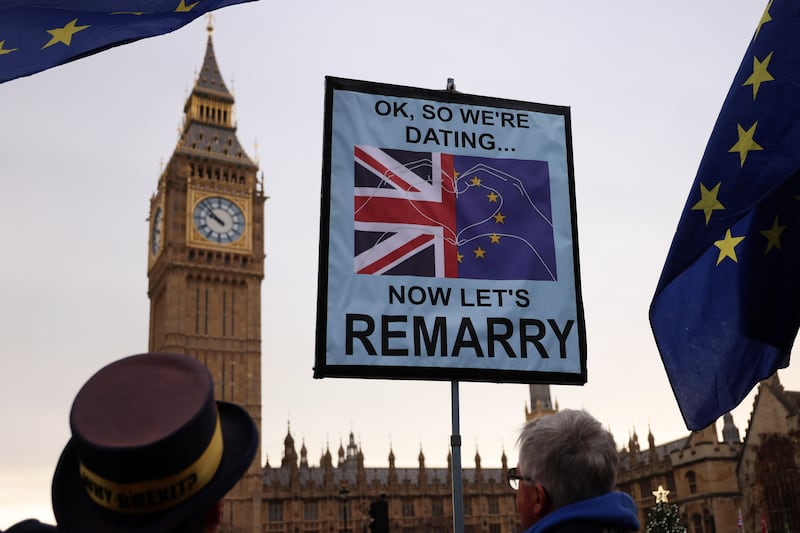Epilogue
It’s a famous moment. Kerry’s Dara Ó Cinneide is trying to escape with the ball in an All-Ireland semi-final but he is surrounded by four Tyrone players, like a stag at bay. Viewed as a video clip, the relentlessness of it all is clear.
Everywhere Ó Cinnéide turns there are opponents snapping at him. He does well at one stage to keep the ball in play underneath the Hogan Stand and breaks clear only to be run to ground again. Eventually he gets the ball away to Eoin Brosnan, who is soon equally harassed before losing possession.
It stood at the time and even since as the most striking image of the “swarm defence” and what Mickey Harte’s newly-emergent team were bringing to the table: implacable energy and commitment.
Iconography for the new age of football.
READ MORE
As is often the case when new methods of playing are first seen – it had been the case with Down in the 1960s – some reactions were a bit scalded.
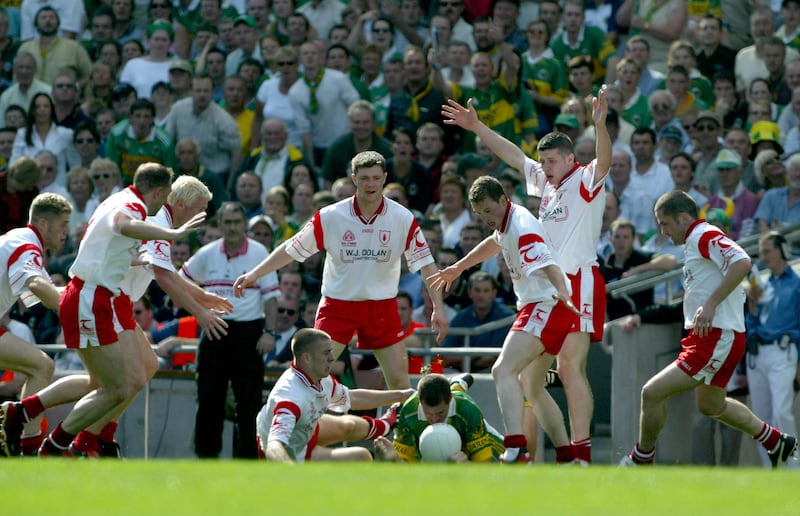
Surprisingly, Seán Cavanagh, a 20-year-old force of nature at centrefield that day, says that the swarm was not planned or coached but simply a byproduct of their application.
“I can genuinely say with my hand on my heart there was never a strategy or tactic to do that. I was never told to get back and Brian Dooher was never told to get back. We were simply that hungry for success that we went after possession. Nowadays you’re set up like a soccer team – how you’ll play with the ball and how you’ll play without it but back then, no.
“Enda [McGinley] was told to drop out and double-team Darragh Ó Se and players would be given individual marking jobs but it was never a case of Brian [Dooher], any time you don’t have the ball, we want you to drop back to your own 45. Guys just naturally did that because we were so fit and energetic. It wasn’t a game plan.”
Kerry were obviously shocked. They shouldn’t have been.
Prologue
By the end of 2003, Tyrone had won everything – league, Ulster championship and All-Ireland – except the McKenna Cup, losing that final to Monaghan. The loose recollection became that Mickey Harte’s team, who he had revealed never played challenge matches, had lost just one match all year.
In fact, the start to their national league campaign was underwhelming. They lost two of their first three matches, to Roscommon and Dublin but they would be the last defeats of the year.
A fortnight after the Dublin match there was, however, a match that looked far from promising after the first half. There followed an intervention from the manager. It was the first week that Harte had been able to focus fully on the Tyrone job, as until that February he was still also guiding his club Errigal Ciarán who had finally lost to Nemo Rangers in an All-Ireland semi-final.
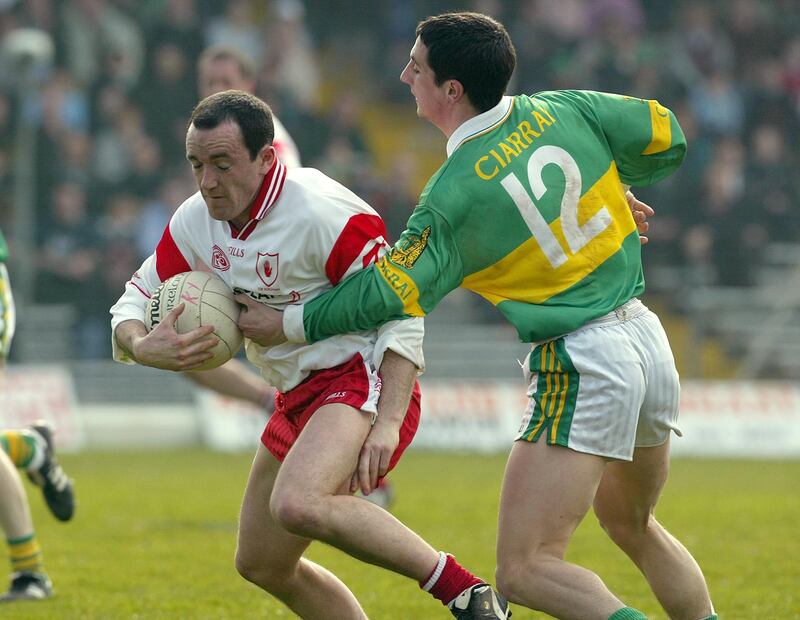
“Against Donegal in Coalisland, we were three or four down at half-time,” recalls Cavanagh. “We knew Mickey from minor and under-21 and he had a reserved nature and way of managing teams. But at half-time against Donegal he did properly lose it – banging tables and throwing water bottles.
“He knew we weren’t playing to potential and I got moved to midfield from corner forward and that was the start of it for me.”
Three weeks later, Tyrone had to travel to Fitzgerald Stadium in Killarney. The team’s performance that day convinced many that they were now developing into the sort of force that might impact on the higher reaches of the championship.
Kerry
Although it wasn’t known, 2003 would be Páidí Ó Sé's last year in charge of his county. By then, Kerry had sustained two unexpected championship reverses in successive seasons: an outsized beating by Meath in the 2001 All-Ireland semi-final (when the winners didn’t even close the deal in the final against Galway) and, 12 months on, a surprise defeat by Armagh, who were winning their first All-Ireland title.
Even the close season had been best forgotten after a controversial interview with Ó Sé appeared in the Sunday Independent, describing Kerry supporters as the “the roughest type of f***ing animals you could ever deal with”.
He later apologised from the team holiday in South Africa.
The team were late back into training and behind most other county teams when the league began, according to Eoin Brosnan.
“We had been in the All-Ireland final and holidayed in South Africa in January 2003 and were back a couple of weeks when we played the first-ever game under lights at Páirc Uí Rinn and Cork beat us well. So we were a little behind the curve as regards the bulk of our work.”
It was said at the time that after Ó Sé's holiday had been spent explaining and apologising, he appeared relieved to be in Cork talking about an eight-point defeat.
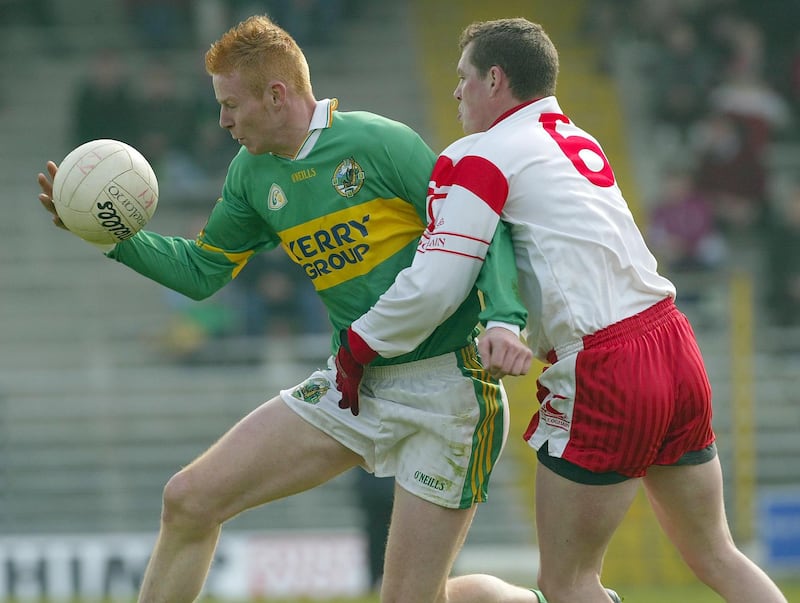
Tyrone
On the road to their great achievements in 2003, Tyrone’s victory in Killarney was a significant milestone. Manager Mickey Harte had guided the Tyrone minors and under-21s to All-Ireland success. The seniors would be next.
Cavanagh was a graduate of those under-age teams and was aware of the symbolism of playing Kerry.
“I grew up with my Dad talking about Dublin and Kerry and his attitude was, ‘we’re good but we’re not as good as those counties’. So for us to go to Killarney and beat Kerry in their back garden hit home that there might be more for us.
“I remember that game really well. We had started the league really poorly, losing to Roscommon and Dublin. Even though we hadn’t had a great start, we were a confident enough bunch but couldn’t be quite sure how good we were. Before the match, Paddy Tally our trainer – now with Kerry – goes, ‘you know this pitch is made for guys like you’.
“I said, what do you mean? And he was, like, ‘footballers’.
“I remember thinking, God, do Kerry not have footballers as well! But it was our mentality that we backed ourselves to play football.”
I’ll take the one who’s not Darragh Ó Sé
Fitzgerald Stadium is overlooked by St Finan’s Hospital, whose long-serving CMO Eamonn O’Sullivan directed Kerry to eight All-Ireland successes at various stages between the 1920s and 1960s.
If his spirit was gazing down on the Kerry-Tyrone match this month 20 years ago, he would have appreciated the terms of engagement; his traditional game under attack from new-fangled ideas.
Mobile, quick defenders zipped around working the ball out from the back while half the attack dropped back to the congestion of the middle third. In the space of a couple of minutes Brian Dooher kicked a nice point and found himself then in the right corner-back space blocking a Colm Cooper kick.
Centrefield bamboozled Kerry, in the first half anyway. Harte remarked afterwards that they hadn’t won the sector by catching ball but by moving possession quickly through the middle.
Darragh Ó Sé asserted himself after half-time, catching flocks of kick-outs, but although Kerry’s performance levels picked up, they couldn’t catch the six-point lead, 1-7 to 0-4, established by Tyrone against the wind.
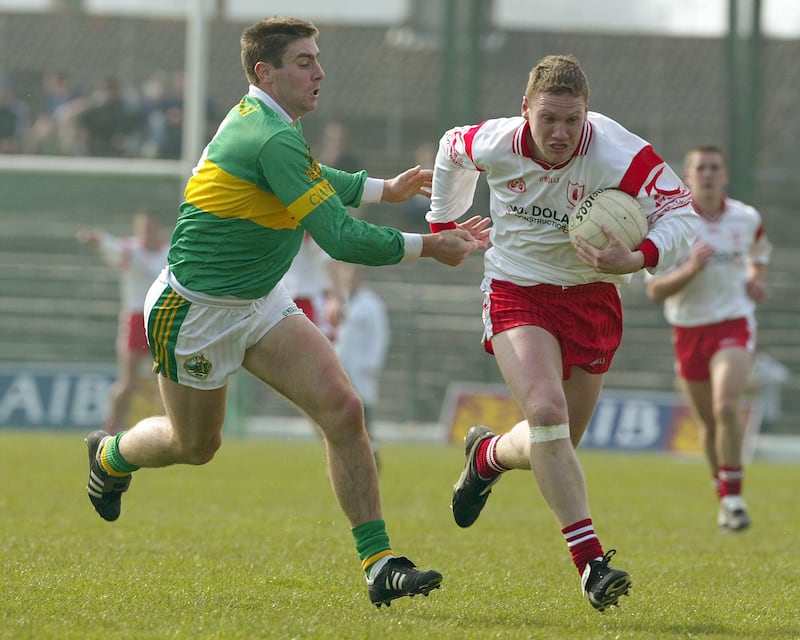
“I was playing midfield with the late Cormac [McAnallen],” says Cavanagh, “and he said to me, ‘who do you want to take?’ I said I’ll take the one who’s not Darragh Ó Sé, thanks. God love, Cormac, but Darragh took about 10 kick-outs that day. I was thinking, ‘fecking hell is this the level of midfielders that’s going around? Maybe I’d be better off back in the forwards!’
“The physical presence of Darragh blew me away but at the same time the wide-open pitch in Killarney on a sunny, dry day was going in our favour so despite their having Declan O’Sullivan, the Gooch and Dara Ó Cinnéide came on early, we weren’t daunted.
“I scored a couple of points and we just got over the line but I remember coming back up the road feeling that we kind of had arrived. When you beat a team like Kerry, you have to earn respect and for all our youthful exuberance there was no getting it out of proportion. More a sense of contentment that we were there.”
Cavanagh was named Man of the Match after a non-stop display of running and moving the ball at pace as well as scoring two points from play. He glosses over the award but the switch to centrefield had become permanent.
Faulty radar
Eoin Brosnan believes that Kerry’s late start to the season didn’t help and neither did how understrength they were on the day. But he retains a niggling sense of their failing to take note of menacing opposition, especially when the All-Ireland semi-final rolled around in August.
“We mightn’t have given Tyrone the attention that they deserved in that they had superb under-age success. I was a minor in 1998 and they were very good then and went on to win All-Ireland under-21 titles.
“Those teams had the late Cormac McAnallen, Kevin Hughes, Brian McGuigan, Philip Jordan – all of whom would be household names throughout the 2000s. Did they get the respect the respect they merited early on in that league? Possibly not, which came back to bite us later that year when they beat us out the gate, really.
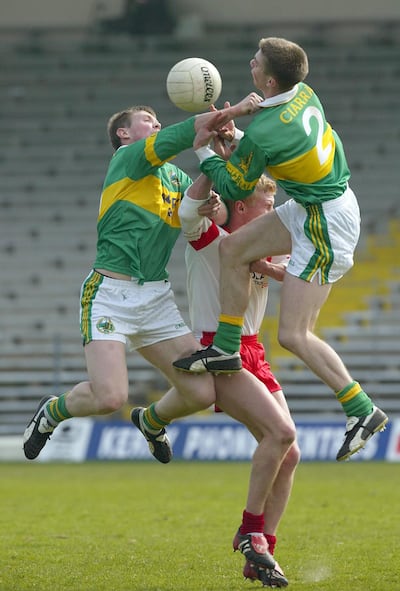
“The big names then were Armagh and Galway who had won the most recent All-Irelands. Tyrone were coming a little under the radar. Back then it was all print media with a bit of television. There were no podcasts or social media. Slipping under the radar was a bit easier.”
He also understands that there was only so much attention Kerry would pay to a league setback.
“Páidí Ó Sé was a huge man for the championship. The league wasn’t the highest in his pecking order and then we were undercooked and whatnot and maybe a bit naïve that things would be fine come the summer.”
Epilogue II
When August rolled around, the lessons of the championship had been absorbed. In the white heat of a nine-point comeback against Down in the drawn Ulster final, Cormac McAnallen had been forged as the new full back and Kevin Hughes brought to centrefield.
It was well remembered that Darragh Ó Sé had commandeered the means of production with his monopolising of the high ball in Killarney.
“Because he had been so dominant,” says Cavanagh, “Mickey had a definitive plan that Kevin Hughes would mark Darragh but not really compete with him in the air – let him have the ball because there was no point in competing! Wait for him to come down and then Enda McGinley would come in from corner forward and essentially we doubled up on him.”
The emphatic win marked the end of the road for Páidí Ó Sé after winning two All-Irelands. The counties would meet again twice more that decade, each time in the All-Ireland final. Tyrone won both – even though Kerry won more All-Irelands.
“We were well beaten,” according to Brosnan. “Kerry traditionally believed that style would win out over tactics and that belief came back to bite us. We had to adapt and change. Mickey Harte had a plan to prevent us playing to our strengths, which is what managers are meant to do.
“We were a very good side. It was just we came up against a better one.”


